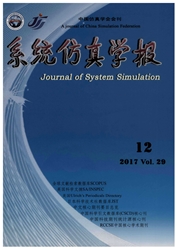

 中文摘要:
中文摘要:
针对交通系统的动态性和随机性,提出了信号交叉口的自适应控制模型。充分考虑了转弯比例的时变性以及车道分配的时变性,给出一种交叉口随机动态模型。将强化学习(RL)引入到交通信号系统中,针对交通网络的交通流及信号特征,建立了RL的状态空间、动作空间和回报函数,以最小化交叉口的排队车辆数为目标,实施对交通信号的优化控制.在不同的交通环境设定下,对典型的十字交叉口进行仿真试验,将RL控制方法同传统的定时控制和感应控制进行了对比。结果表明,RL控制器具有很强的学习能力,对于交通环境的突然变化仍可以保持较高的控制效率。
 英文摘要:
英文摘要:
On account of the random, dynamic fluctuation of traffic demands, an adaptive control model of signalized intersection was proposed. The traditional intersection traffic model was extended to a new mode taking some real aspects of traffic conditions into account, such as the turning rate and the lanes scheme. Moreover, a stochastic traffic signal control scheme, based on Reinforcement Learning, was introduced in the traffic signal control systems due to its powerful adaptability. The model was tested on a typical four-legged signalized intersection under the various scenarios, and compared to both pre-timed controller and the actuated controller. Analyses of simulation results using this approach show significant improvement over traditional control, especially for the uncertain change of the traffic condition.
 同期刊论文项目
同期刊论文项目
 同项目期刊论文
同项目期刊论文
 期刊信息
期刊信息
